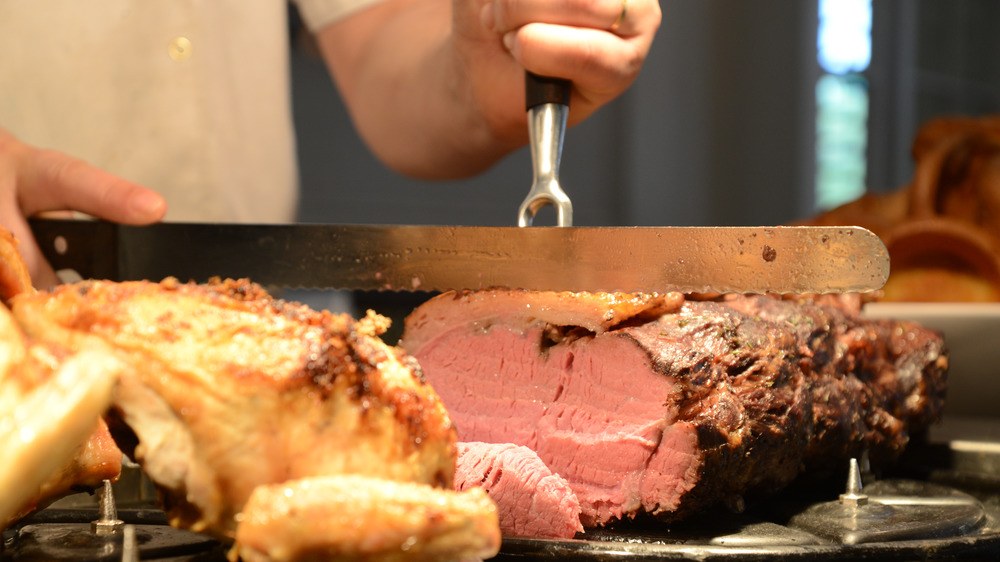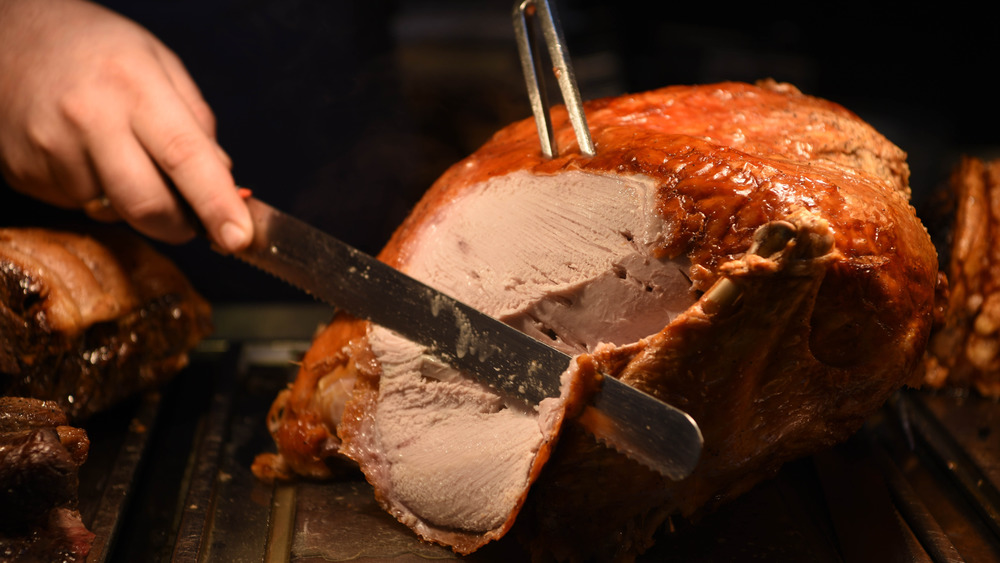The Major Difference Between Carving Knives And Slicing Knives
Buying kitchen knives can be an intimidating endeavor given how expensive they can be. It's understandable that you'd want to buy good but affordable options and only the knives you will need or use most. Apart from chef's and paring knives, carving and slicing knives are similar, useful knives to have on hand, though you might not use them every day. But if you're only looking to buy one, then it's helpful to know the differences between the two — especially because the names for the two kinds of knives can sometimes be reversed.
Carving knives are the ones that show up around the time of holidays meals to carve the turkey, ham, chicken, or whatever your bone-in or poultry main course might be. According to J. Kenji López-Alt, the blade is thinner and longer than a chef's knife, though it too ends with a sharp, tapered point (via Serious Eats). Carving knives are also thinner and more flexible so they can more easily cut around cartilage and between bones (via The Kitchn). Many people can still accomplish this task with a chef's knife, though carving knives are helpful.
Slicing knives are more versatile
Slicing knives look similar to carving knives in that they too have large, long, and narrow blades. However, there are two visual distinctions that set slicing knives apart from carving knives. Slicing knives have a round tip and what's known as a Granton edge, according to Series Eats, which are shallow indentions all along the length of the blade's side. This keeps whatever you're cutting from sticking to the blade as you work.
Slicing knives are quite versatile thanks to their length. These knives are great for thinly slicing meat and can work well for roasts. J. Kenji López-Alt even says he uses the knife for foods "like soft terrines or foie gras." But the knife is also perfect for slicing fruits and vegetables too (via Kamikoto). You should just avoid using it for things like cutting through bone since its blade is more flexible and narrow. The length also makes it an unwieldy choice for smaller tasks like peeling or mincing, according to Kamikoto as well.
So, if you have to choose between the two, consider what kitchen tasks you perform most often and decide which is the better fit for you.

